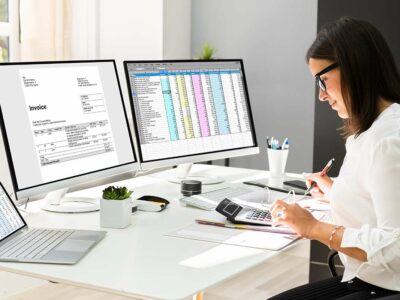
Each subsequent year’s amount would then be reduced, since the remaining amount to be depreciated is based on the book value rather than the original cost. The method used by the IRS is called The Modified Accelerated Cost Recovery System (MACRS). MACRS requires that all depreciated assets be assigned to a specific asset class. You can find the detailed table in Publication 946, How to Depreciate Property, with the updated 2019 version expected soon.
Accounting for Depreciation Expense
To get the depreciation cost of each hour, we divide the book value over the units of production expected from the asset. Depreciation is the process of deducting the total cost of something expensive you bought for your business. But instead of doing it all in one tax year, you write off parts of it over time. When you depreciate assets, you can plan how much money is written off each year, giving you more control over your finances.

AccountingTools
- There are different methods used to calculate depreciation, and the type is generally selected to match the nature of the equipment.
- Accumulated depreciation is a measure of the total wear on a company’s assets.
- The assessed value of the house is $75,000, and the value of the land is $25,000.
- Accumulated depreciation is known as a “contra account” because it has a balance that is opposite of the normal balance for that account classification.
- The entire cost of a capital asset is not charged to any one year as an expense; rather the cost is spread over the useful life of the asset.
- At the end of the day, the cumulative depreciation amount is the same, as is the timing of the actual cash outflow, but the difference lies in net income and EPS impact for reporting purposes.
- We’ll explore different ways to calculate steady and accelerated depreciation so you can measure depreciation on different types of assets.
A Form 1040 return with limited credits is one that’s filed using IRS Form 1040 only (with the exception of the specific covered situations described below). For example, let’s say the assessed real estate tax value for your property is $100,000. The assessed value of the house is $75,000, and the value of the land is $25,000. Remember, the bouncy castle costs $10,000 and has a salvage value of $500, so its book value is $9,500. Play around with this SYD calculator to get a better sense of how it works. Even if you defer all things depreciation to your accountant, brush up on the basics and make sure you’re leveraging depreciation to the max.
Double-declining balance depreciation
If a manufacturing company were to purchase $100k of PP&E with a useful life estimation of 5 years, then the depreciation expense would be $20k each year under straight-line depreciation. Generally speaking, Section 1245 property is depreciable personal property used in your business. This depreciation expense definition includes intangible personal property, such as patents, copyrights, and other intellectual property. This formula is best for production-focused businesses with asset output that fluctuates due to demand. To claim depreciation expense on your tax return, you need to file IRS Form 4562.
- With this method, fixed assets depreciate more so early in life rather than evenly over their entire estimated useful life.
- In turn, depreciation can be projected as a percentage of Capex (or as a percentage of revenue, with depreciation as an % of Capex calculated separately as a sanity check).
- Accumulated depreciation specifies the total amount of an asset’s wear to date in the asset’s useful life.
- Note that while salvage value is not used in declining balance calculations, once an asset has been depreciated down to its salvage value, it cannot be further depreciated.
- To get a better sense of how this type of depreciation works, you can play around with this double-declining calculator.
The articles and research support materials available on this site are educational and are not intended to be investment or tax advice. All such information is provided solely for convenience purposes only and all users thereof should be guided accordingly. In this example, we can say that the service given by the weighing machine in its first year of life was $200 ($1,000 – $800) to the company. The four methods described above are for managerial and business valuation purposes. Christine Aebischer is an assistant assigning editor on the small-business team at NerdWallet who has covered business and personal finance for nearly a decade. Previously, she was an editor at Fundera, where she developed service-driven content on topics such as business lending, software and insurance.
How Do You Calculate Depreciation Annually?
In between the time you take ownership of a rental property and the time you start renting it out, you may make upgrades. Those include features that add value to the property and are expected to last longer than a year. You are allowed to depreciate the value of a building you’ve purchased–but the value of the land it’s on can’t be written off. For the sake of this example, the number of hours used each year under the units of production is randomized. So, even though you wrote off $2,000 in the first year, by the second year, you’re only writing off $1,600. In the final year of depreciating the bouncy castle, you’ll write off just $268.
Depreciation does not result from any systematic approach but occurs naturally through the passage of time. As business accounts are usually prepared on an annual basis, it is common to calculate depreciation only once at the end of each financial year. When calculating depreciation, the estimated residual value is not depreciation because the business can expect to receive this amount from selling off the asset.
If a company routinely recognizes gains on sales of assets, especially if those have a material impact on total net income, the financial reports should be investigated more thoroughly. Management that routinely keeps book value consistently lower than market value might also be doing other types of manipulation https://www.bookstime.com/ over time to massage the company’s results. Depreciation is listed as an expense on your income statement since it represents part of the asset cost allocated to the period. It’s not an asset or a liability itself, but rather an accounting tool used to measure the change in value of an asset.

